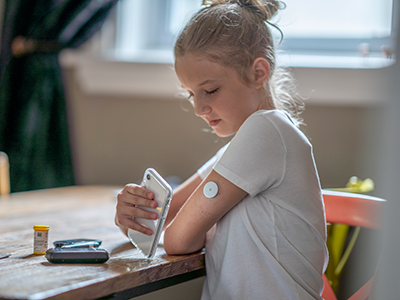Introduction
Diabetes is a chronic disease affecting millions. kind 1 diabetes is the most prevalent kind in children, caused by the immune system attacking and destroying insulin-producing pancreatic cells. The body uses glucose for energy through insulin..
Managing pediatric diabetes is difficult, but numerous tools are available. Continuous glucose monitoring is crucial. Day and night, CGMs measure blood glucose levels. This information can aid parents and children in diabetes management decisions.
The Benefits of CGMs for Pediatric Diabetes
The benefits of CGMs for pediatric diabetes are many. Benefits include:
- Real-time glucose readings: CGMs allow parents and children to track glucose levels throughout the day. This data can assist in managing diabetes by identifying trends and patterns.
- CGMs notify parents and children of low glucose levels, reducing the risk of hypoglycemia. Low blood sugar causes hypoglycemia, a dangerous disorder. Fill out this form to check if you or a friend qualifies for a CGM.
- Improved quality of life: CGMs help diabetic children live normally. Without continually testing their blood sugar, they can participate in activities.
The Challenges of Using CGMs in Children
Although CGMs have many benefits, using them in children might be difficult. Challenges include:
- CGMs are pricey and may not be insured.
- CGMs can be uncomfortable, therefore some kids may not want to wear them.
- Sensor insertion: Some youngsters fear sensor insertion because it hurts.
- Technology failure: CGMs might malfunction and give erroneous glucose readings. Read about Diabetes Advancements here
Effective CGM Management in Children
Despite the obstacles, CGMs can help manage pediatric diabetes. Tips for good CGM control in children:
- Choose the proper CGM: There are many CGMs, so choose one that suits your child. Take into account cost, wearability, and sensor insertion.
- You should teach your youngster how to utilize the CGM. This explains how to wear the gadget, check readings, and handle issues.
- Be patient: Your youngster may need time to adjust to the CGM. Encouragement and patience are needed.
Work with your child’s doctors: CGM management is available from your child’s healthcare team. They can advise and troubleshoot issues.
Read Guide about Wegovy Dosage Guide: The Best Way For Weight Loss
Conclusion
CGMs help manage pediatric diabetes. They improve glucose visibility, minimize hypoglycemia risk, and improve quality of life. However, cost, device wearability, and sensor implantation remain issues. Choosing the correct CGM, educating your child, being patient, and working with your child’s healthcare team can help your child manage CGM.
Here are more CGM parenting tips:
Record your child’s glucose levels. This tracks trends and patterns throughout time.
Set up CGM notifications for your child. This shows if their glucose levels are excessively high or low.
Teach your youngster how to handle a low glucose alarm. They should address low blood sugar safely and swiftly.
Check your child’s CGM device regularly for proper operation.


